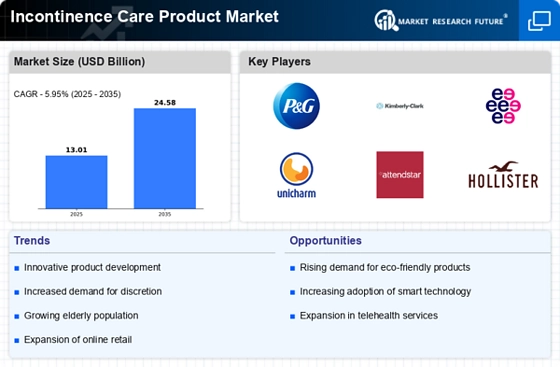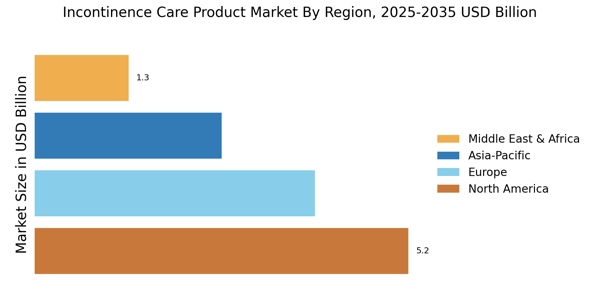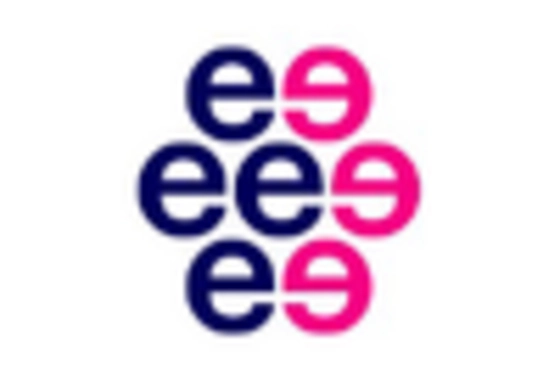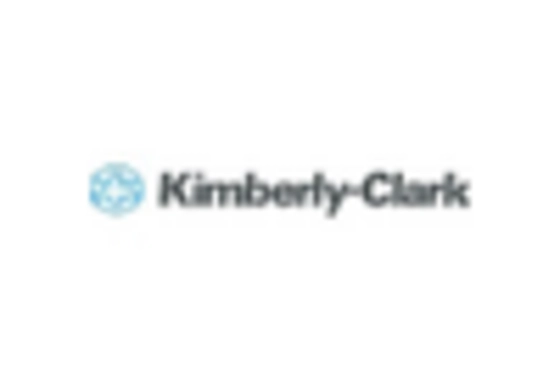The Incontinence Care Product Market is characterized by a dynamic competitive landscape, driven by an increasing global awareness of incontinence issues and a growing aging population. Key players such as Procter & Gamble (US), Kimberly-Clark (US), and Essity (SE) are at the forefront, each adopting distinct strategies to enhance their market presence. Procter & Gamble (US) emphasizes innovation in product development, focusing on advanced absorbent technologies and eco-friendly materials. Meanwhile, Kimberly-Clark (US) has been expanding its product lines to cater to diverse consumer needs, particularly in emerging markets. Essity (SE) is leveraging its strong sustainability initiatives to differentiate its offerings, aligning with consumer preferences for environmentally responsible products. Collectively, these strategies contribute to a competitive environment that is increasingly focused on innovation and sustainability.
The market structure appears moderately fragmented, with several key players holding substantial market shares while also facing competition from smaller, niche brands. Companies are increasingly localizing manufacturing to optimize supply chains and reduce costs, which may enhance their responsiveness to regional market demands. This localization strategy, coupled with supply chain optimization, is likely to strengthen the competitive positioning of major players, allowing them to better serve their customers and adapt to market fluctuations.
In August 2025, Procter & Gamble (US) announced the launch of a new line of biodegradable incontinence products, marking a significant step towards sustainability in the industry. This initiative not only aligns with global trends towards eco-friendliness but also positions the company as a leader in innovation, potentially attracting environmentally conscious consumers. The strategic importance of this move lies in its ability to enhance brand loyalty and capture a growing segment of the market that prioritizes sustainability.
In September 2025, Kimberly-Clark (US) unveiled a partnership with a tech startup to integrate AI-driven analytics into its product development process. This collaboration aims to enhance consumer insights and improve product efficacy, reflecting a broader trend towards digital transformation in the industry. The strategic significance of this partnership is profound, as it may enable Kimberly-Clark to stay ahead of consumer trends and rapidly adapt to changing market demands.
In July 2025, Essity (SE) expanded its operations in Asia by acquiring a local incontinence product manufacturer. This acquisition is indicative of Essity's strategy to strengthen its foothold in high-growth markets, particularly in regions with increasing demand for incontinence products. The strategic importance of this move lies in its potential to enhance market share and operational efficiency, allowing Essity to leverage local expertise and distribution networks.
As of October 2025, the competitive trends in the Incontinence Care Product Market are increasingly defined by digitalization, sustainability, and technological integration. Strategic alliances are becoming more prevalent, as companies seek to enhance their capabilities and market reach. The shift from price-based competition to a focus on innovation, technology, and supply chain reliability is evident, suggesting that future competitive differentiation will hinge on the ability to deliver superior products and services that meet evolving consumer expectations.


















Leave a Comment